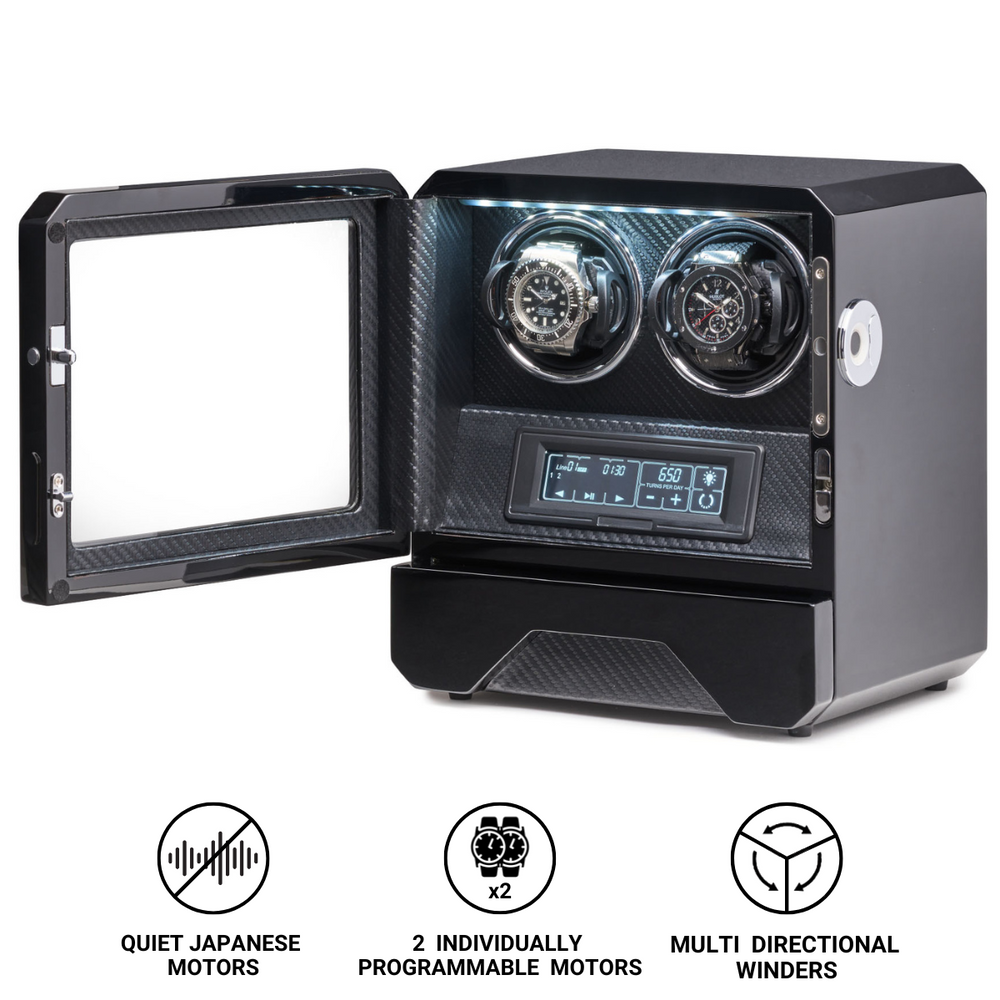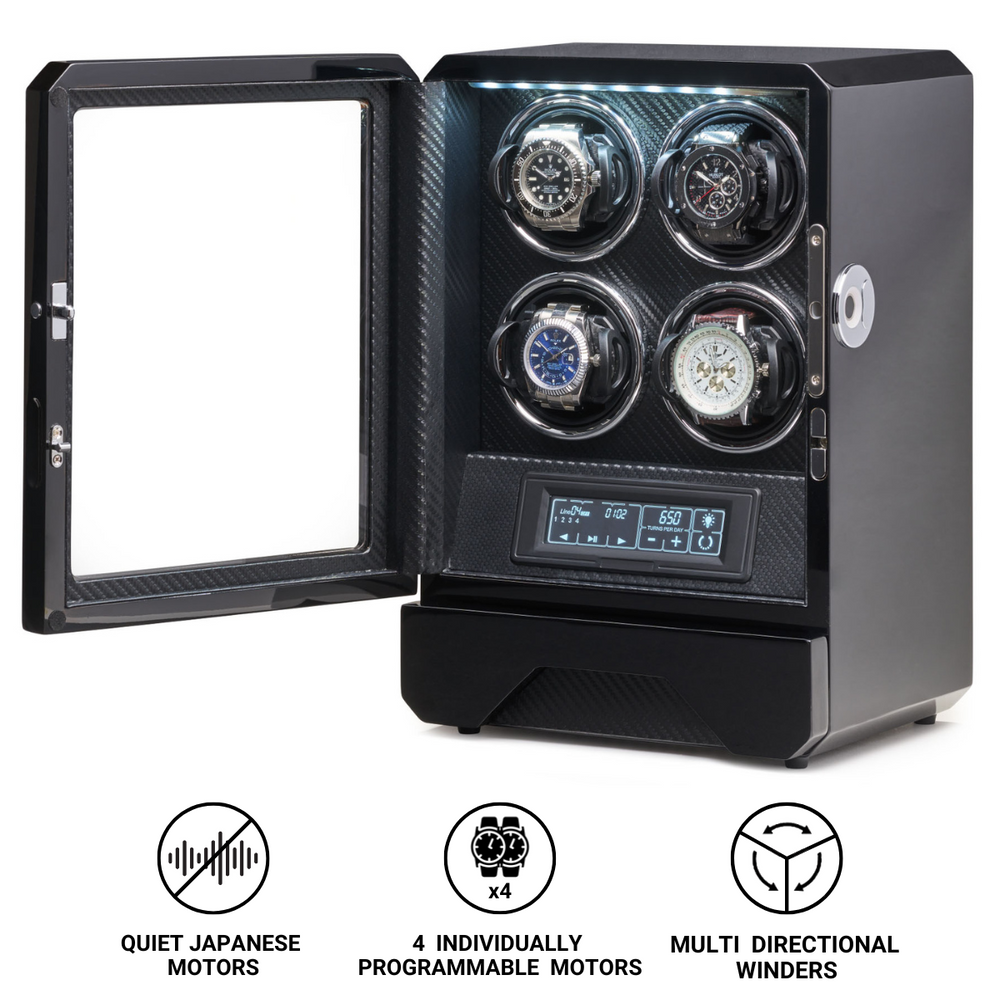What is Compass Bezel?
The compass bezel is one of the most recognisable features found on adventure and field watches. It is a rotating bezel marked with the four cardinal points - North, East, South, and West - often accompanied by intermediate directions. While its function may appear simple at first glance, the compass bezel is a remarkable example of how traditional watchmaking and practical field tools can merge into a single, elegant instrument. It embodies the spirit of exploration and self-reliance that has long defined mechanical watches.
For travellers, explorers, pilots, and outdoor enthusiasts, the compass bezel represents more than decoration. It offers a means of orientation using nothing but the sun and a watch, transforming the timepiece into a reliable navigation aid when other instruments are unavailable. Its origins are deeply rooted in the history of adventure and discovery, when accurate timekeeping and direction finding were essential to survival.
The Origins of the Compass Bezel
The compass bezel is a relatively modern feature when viewed against the long history of horology, yet its inspiration goes back centuries. Navigation and timekeeping have always been linked. For sailors and explorers in the 18th and 19th centuries, determining longitude required both an accurate timepiece and a means of orienting by the sun and stars. Marine chronometers and magnetic compasses were the foundation of global navigation, but in the 20th century, explorers began to demand smaller, more portable tools that could serve similar purposes.
The wristwatch, already a vital tool for soldiers and aviators during the First and Second World Wars, naturally evolved to include navigational features. Watches used by pilots and military personnel often included rotating bezels marked for timing or directional use. The concept of a bezel with compass markings appeared in the 1930s and 1940s, allowing wearers to find approximate directions without carrying a magnetic compass.
By aligning the watch hands with the sun and using the bezel’s markings, it became possible to determine north and south in both hemispheres. This simple but effective system made the compass bezel invaluable to adventurers, mountaineers, and field engineers working far from civilisation. Over time, the design was refined, and the compass bezel became a hallmark of exploration watches, produced by brands such as Seiko, Citizen, and later, specialist tool watch makers like Sinn and Casio.
How the Compass Bezel Works
The compass bezel does not contain a magnetic needle or any internal compass mechanism. Instead, it functions as a navigational aid by using the position of the sun in relation to the time shown on the watch. This technique is based on a principle of solar navigation that has been used for centuries.
To use a compass bezel in the Northern Hemisphere:
-
Hold the watch flat and point the hour hand directly toward the sun.
-
The midpoint between the hour hand and the 12 o’clock marker on the dial will indicate the south direction.
-
Once south is established, north lies directly opposite.
-
Rotate the bezel so that the “S” mark aligns with the midpoint. The bezel’s remaining markings now provide a rough compass orientation.
In the Southern Hemisphere, the method is reversed. The 12 o’clock marker should be pointed toward the sun, and the midpoint between it and the hour hand will indicate north.
Although this method is not as precise as using a magnetic compass, it provides a practical means of navigation when no electronic or magnetic tools are available. The technique is particularly useful for hikers, explorers, or military personnel who operate in remote areas where reliability and independence are essential.
Design Characteristics of the Compass Bezel
The compass bezel is distinguished by its functional yet versatile design. While the exact markings and layout can vary between manufacturers, certain characteristics remain consistent across most models.
A typical compass bezel includes:
-
The four cardinal directions (N, E, S, W) clearly marked, often accompanied by smaller divisions for NE, SE, SW, and NW.
-
Graduated markings or degree indicators (0° to 360°) on some versions for more precise bearings.
-
A bidirectional rotation system that allows the user to align the bezel easily with the sun or other landmarks.
-
Distinct colour coding or luminescent markings to improve visibility in low light.
In field watches, the compass bezel is usually designed for durability, with knurled or serrated edges that allow for easy operation even while wearing gloves. Many watches feature a coin-edge or gear-edge design to enhance grip. Some manufacturers combine the compass scale with other functional bezels, such as tachymeter or elapsed time bezels, making the watch more versatile.
The choice of materials also reflects the bezel’s intended purpose. Stainless steel, titanium, or ceramic are common, offering resistance to scratches, corrosion, and extreme environmental conditions. On modern digital or hybrid watches, the compass bezel may be purely decorative, with an internal electronic compass taking over the functional role. Nevertheless, even as a design element, it remains a symbol of practicality and adventure.
The Compass Bezel in Field and Aviation Watches
The compass bezel found its earliest widespread use in watches designed for pilots and field operatives. During the mid-20th century, navigation was a manual process, relying on compasses, maps, and precise timekeeping. Pilots and military navigators used their watches as supplementary tools to maintain direction and timing during missions.
For aviators, the compass bezel provided a quick visual reference to cardinal directions. When combined with flight charts and cockpit instruments, it allowed for simplified orientation. Although it could not replace the aircraft’s magnetic compass, it proved useful for cross-referencing and maintaining situational awareness.
In land-based exploration, the compass bezel became equally valuable. Outdoor adventurers, surveyors, and mountaineers found it useful for orienting maps and maintaining direction while on foot. Watches like the Seiko Alpinist, introduced in the 1960s, featured internal rotating compass bezels operated by a secondary crown, protecting the mechanism from dust and debris. This design became iconic and remains a staple of adventure watches today.
Citizen also produced numerous models featuring compass bezels, particularly in its Promaster and Altichron lines. These watches combined analog timekeeping with environmental sensors, including altimeters and barometers, offering a complete toolkit for outdoor exploration.
Practical Applications in Navigation
While most modern users rely on GPS for navigation, the compass bezel remains a valuable backup tool. It provides a method of orientation that is immune to battery failure, electromagnetic interference, or satellite inaccessibility. Its simplicity ensures that it can be used in virtually any environment, from dense forests to high-altitude terrains.
The compass bezel can assist with:
-
Determining cardinal directions based on the sun’s position.
-
Orienting a map by aligning the bezel markings with geographical features.
-
Estimating the direction of travel relative to known landmarks.
-
Maintaining orientation during low-visibility conditions when landmarks are obscured.
Professional explorers often view the compass bezel as a failsafe navigation tool, one that reinforces their understanding of natural orientation. Unlike digital instruments, which can fail or lose calibration, the mechanical watch with a compass bezel relies only on sunlight and an understanding of geography.
Evolution and Modern Interpretations
Over the decades, the compass bezel has evolved in design and function, adapting to the changing needs of adventurers and consumers. Early designs were purely mechanical, but later models introduced more sophisticated implementations.
Internal rotating compass bezels, controlled by an additional crown, became a popular choice for durability and waterproofing. This configuration protects the bezel from accidental movement and allows for more precise alignment. Watches from Seiko, Orient, and Glycine adopted this design extensively during the latter half of the 20th century.
In modern watchmaking, the compass bezel remains a defining feature of tool watches and adventure models. Some luxury manufacturers, such as Montblanc and Breitling, have integrated compass scales into high-end timepieces that blend technical functionality with refined aesthetics.
Digital and hybrid watches, particularly those from brands like Casio, Suunto, and Garmin, have carried the concept further by combining traditional compass markings with electronic compasses, altimeters, and GPS modules. Yet even with advanced technology, the rotating compass bezel continues to serve as a tactile, intuitive, and visually distinctive feature.
The Symbolism of the Compass Bezel
Beyond its functional purpose, the compass bezel carries symbolic significance. It represents guidance, orientation, and the human desire to explore. Wearing a watch with a compass bezel evokes the spirit of adventure and self-reliance, connecting the wearer to a long tradition of explorers, navigators, and pioneers who relied on simple tools to conquer vast and unknown terrains.
For many collectors, the compass bezel is not just a practical element but a statement of identity. It signifies preparedness and curiosity, a subtle reminder that even in a world dominated by digital technology, traditional craftsmanship and mechanical ingenuity remain relevant.
In this sense, the compass bezel transcends its mechanical role. It stands as an emblem of independence and adaptability, qualities that continue to define the most respected tool watches in history.
Conclusion
The compass bezel remains one of the most versatile and historically rich features in watchmaking. Born out of necessity and refined through decades of exploration, it transforms an ordinary wristwatch into a genuine navigational instrument. Its design reflects a perfect balance between form and function, offering both visual sophistication and practical value.
Though digital compasses and GPS systems have largely replaced traditional navigation tools, the compass bezel endures as a symbol of human ingenuity. It reminds us that even the simplest mechanical solutions can provide reliability when technology fails.
From early military watches to modern adventure models, the compass bezel continues to inspire watchmakers and explorers alike. It captures the essence of exploration, independence, and discovery - a small but powerful reminder that direction, like time, is always within reach.









